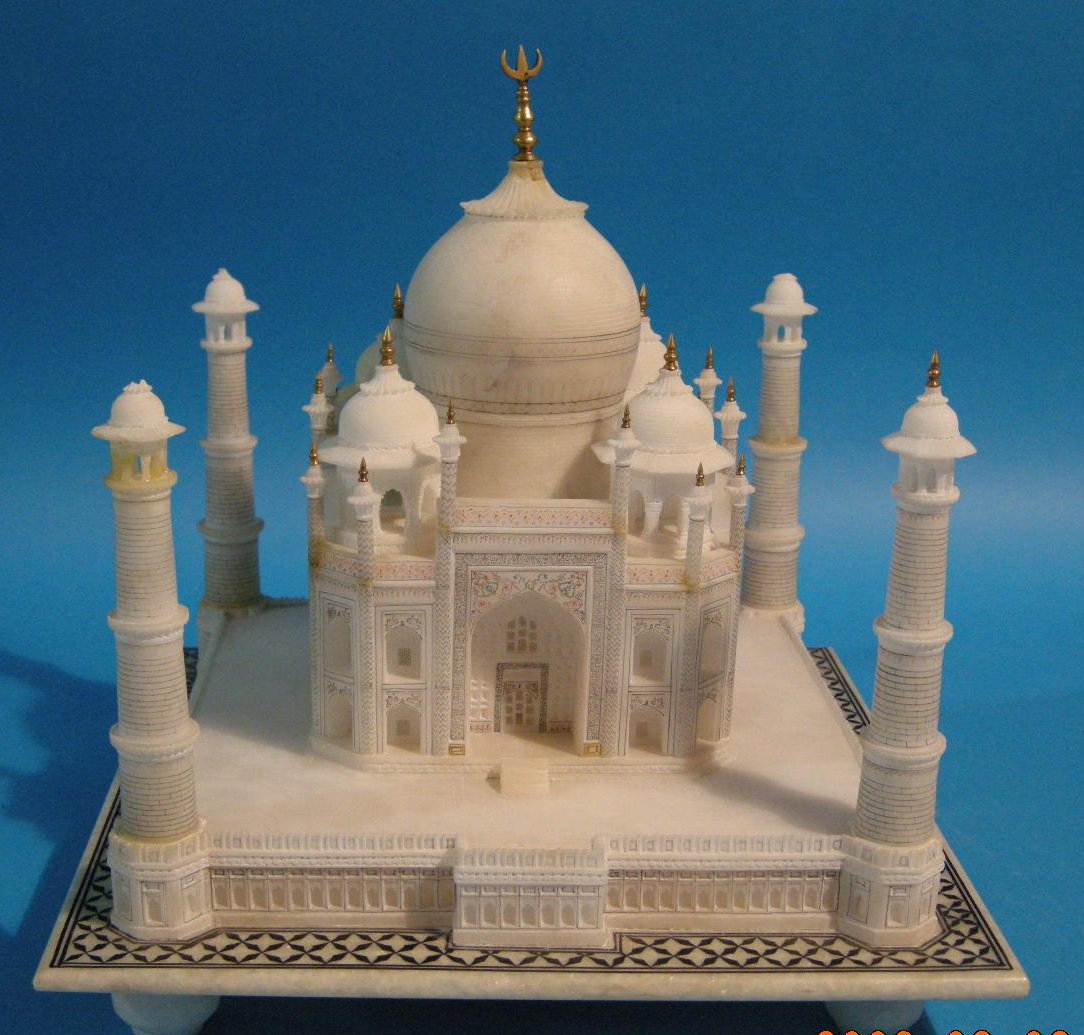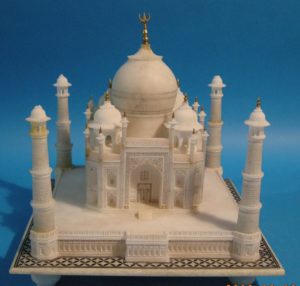Model of the Taj Mahal, stone, purchased in 1959, Agra, India, gift of John S. Van Gilder, 1960.4.2.
The Taj Mahal is one of India’s proudest and most well-known symbols. Although initially constructed long ago in the Mughal Dynasty, it regained modern acknowledgement in 1983 when it gained UNESCO World Heritage status and again in 2007 when it was named one of the seven new wonders of the world. The Taj Mahal was equally as impressive when it was initially constructed in 1643. The materials used required a reliable trade routes with all of Asia. Its marble came from Punjab, India, its turquoise came from Tibet, its jade and crystal from China, and its lapis lazuli from Afghanistan. This use of exotic foreign materials came with a high price tag of an estimated 827 million modern US dollars.

